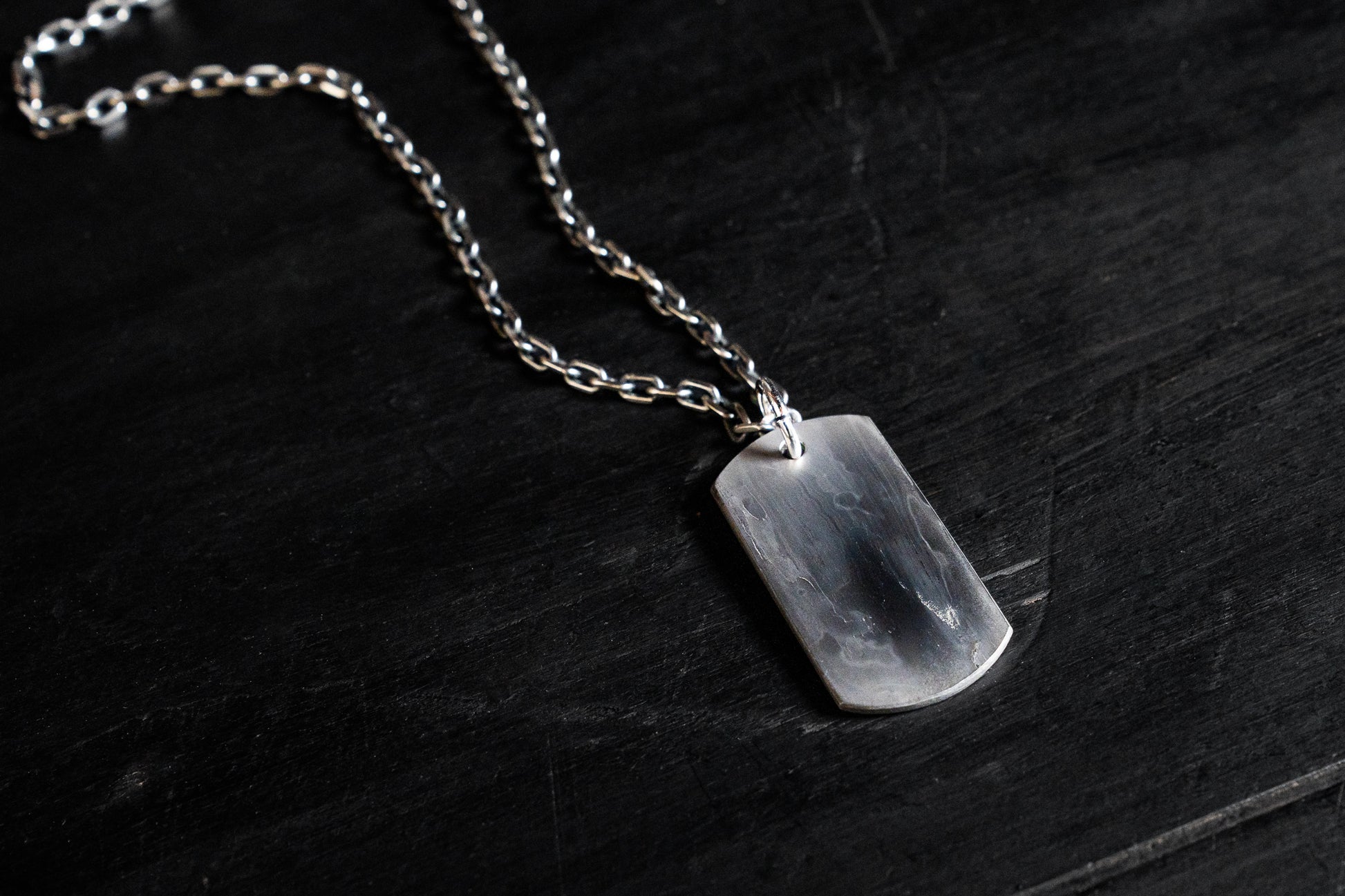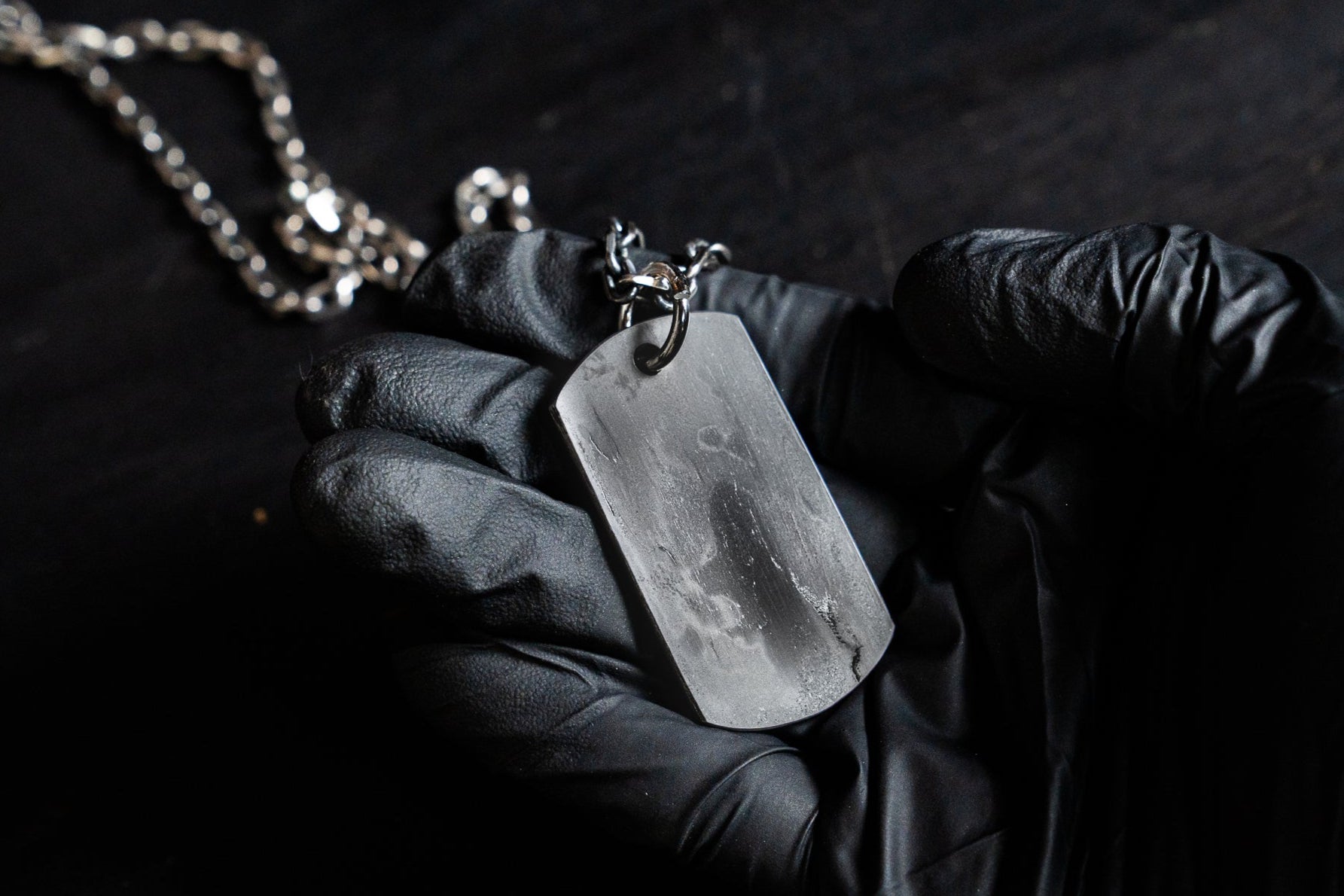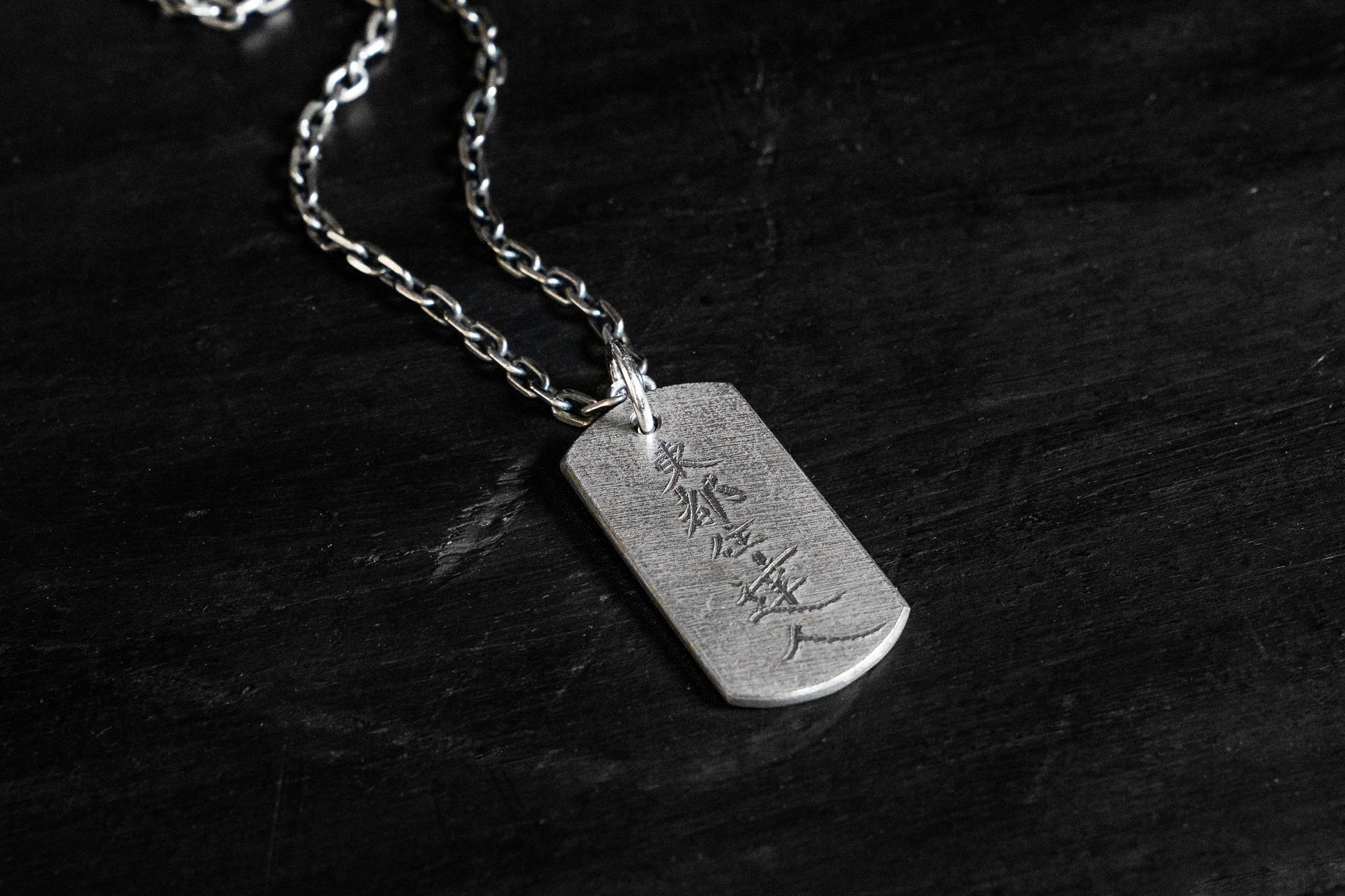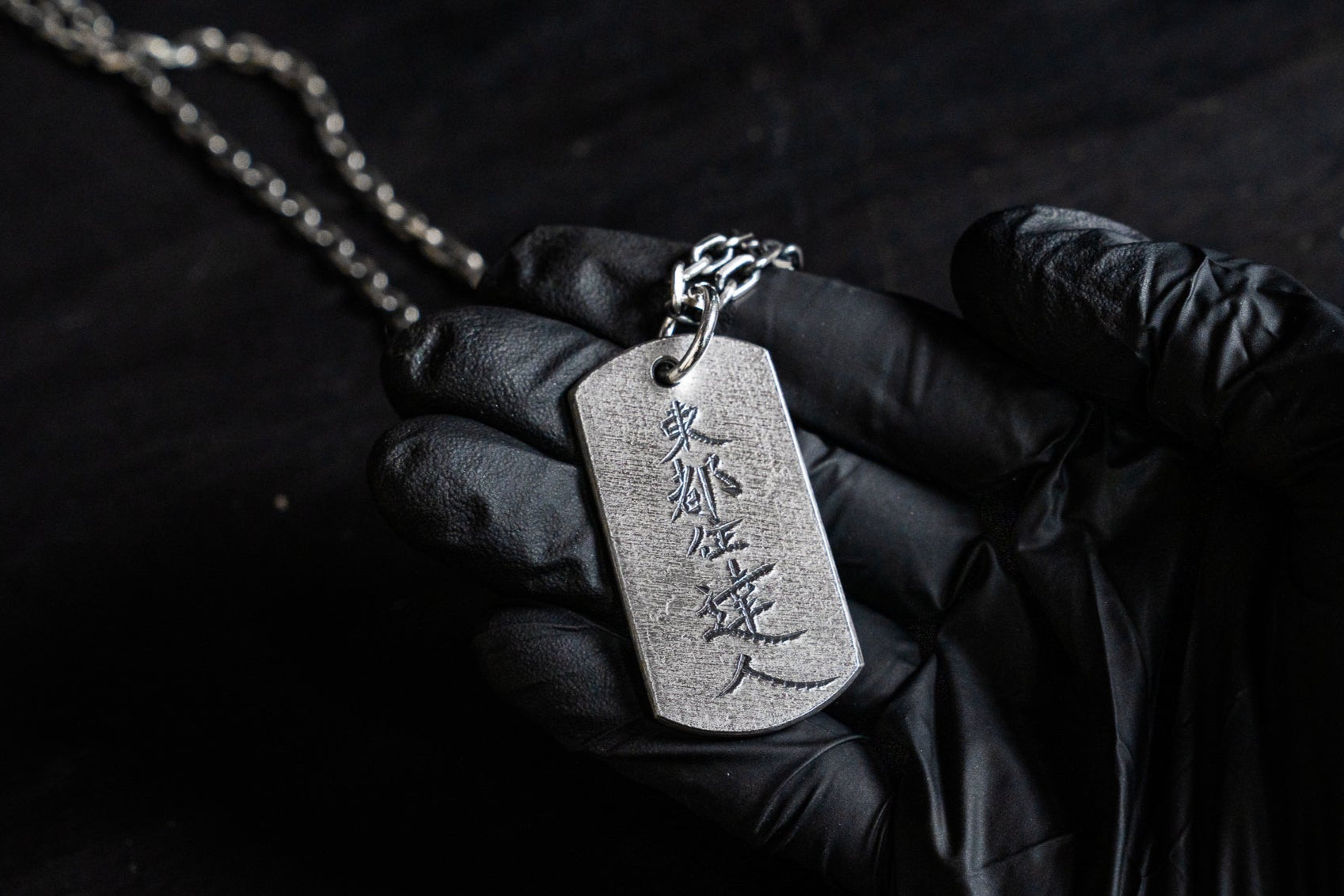Komon
HATSUBI-3
HATSUBI-3
Couldn't load pickup availability
MATERIALS:
Tamahagane(Dog Tag)
Silver 917(Chain and Jump Ring)
Paulownia (Box)
All dog tags are packed in paulownia wood boxes.
CRAFTSMAN:
MAINTENANCE
MAINTENANCE
Tamahagane and Japanese swords are generally resistant to rust as long as they remain clean. However, when touched or worn, they can accumulate dust, skin oils, and other residues that may lead to tarnishing or corrosion over time.
To preserve the piece, gently wipe it with a clean tissue or soft cloth free from additives after use or touch. After wiping it, protection, apply a light coating of traditional sword oil, such as camellia or clove oil, just as you would with a Japanese blade.




SWORD SMITH - TATSUTO YAMANO

Japanese Swordsmith | Apprentice of Yoshindo Yoshihara | Emerging Artisan from Japan
- Born in Kanagawa Japan in 1995
- Began visiting Master Swordsmith Yoshindo Yoshihara’s workshop at age 19, formally apprenticed at age 20
- Earned national swordsmith certification at age 25 after five years of rigorous training
- Received an awards at the Contemporary Swordsmith Exhibition at age 25, Effort Award, 5th place Newcomer Award, Rookie of the Year Award for crafting impressive swords in a short span.
Currently based in Oami Chiba, he continues to forge both swords, kitchen knives and sword accessories with a growing international presence through collaborations with Komon.
POLISHER - IVAN FONSECA

Knife Sharpening Professional | Specialist in Traditional Japanese Polishing Techniques | Canadian-born Craftsman
- Born in Canada in 1971
- Former chef and private chef in Canada
- Co-founded Tosho Knife Arts, a Japanese knife specialty store, in 2010
- Moved to Japan in 2014 and worked at Konosuke in Sakai, Osaka as a sharpener, polisher and brand adviser
Currently based in Kyoto, he opened Komon's gallery and workshop with Komon founder Yuka Nakanishi. He continues to refine his polishing skills and artistic craftsmanship for the world from Kyoto Japan.
MORE DOG TAGS
-
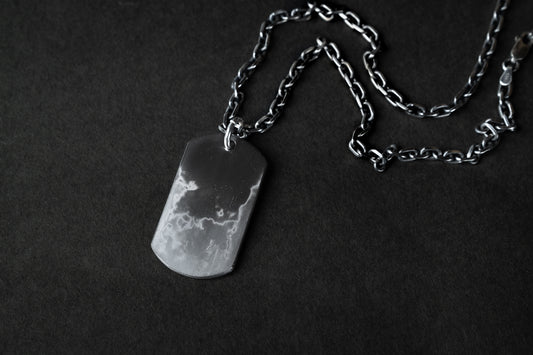 Sold out
Sold outWATAGUMO-4
Regular price ¥65,000 JPYRegular priceUnit price per -
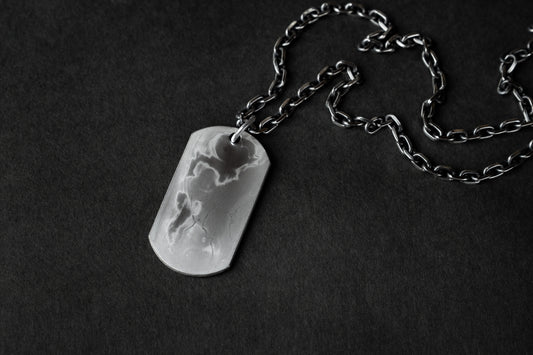 Sold out
Sold outWATAGUMO-3
Regular price ¥65,000 JPYRegular priceUnit price per -
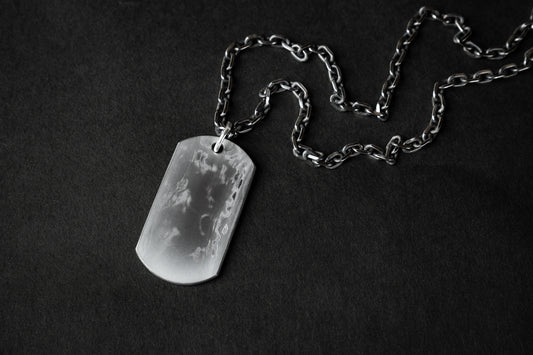 Sold out
Sold outWATAGUMO-2
Regular price ¥65,000 JPYRegular priceUnit price per -
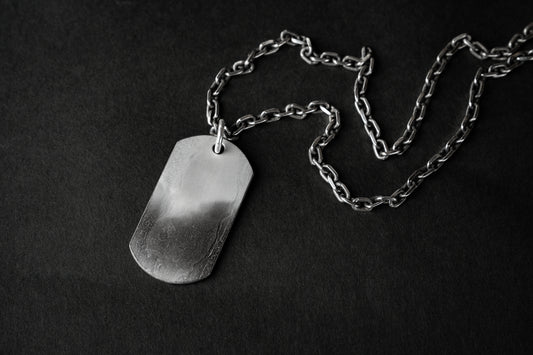 Sold out
Sold outWATAGUMO-1
Regular price ¥65,000 JPYRegular priceUnit price per

Where Swordsmithing Meets Modern Wear
This dog tag is cut from tamahagane steel that has been folded, forged, and drawn out in the same traditional process used to make Japanese swords. Each tag is taken directly from a sword bar, revealing the layered grain patterns of jigane—the soft steel core—and features a visible hamon (temper line), one of the most iconic elements of the sword. No two are alike; each piece is a unique work of craftsmanship, echoing the singular beauty of a true Japanese blade.
-
VISION
Designed and polished by Kyoto-based knife polisher Ivan Fonseca, each Dog Tag reflects his deep respect for Japanese sword craftsmanship. Using traditional polishing methods typically reserved for fine blades, he brings out the depth, clarity, and natural beauty of tamahagane. The minimalist form is intentional—allowing the material to speak for itself while expressing strength and refinement. More than an accessory, this piece is a wearable reflection of Ivan’s dedication to form, function, and the spirit of craftsmanship.
-
FITTINGS
Both the jump ring and the chain are made of 925 sterling silver, valued for its strength, warmth, and subtle shine. Over time, it develops a gentle patina that adds depth and character.
The chain features an etched finish that the layered surface of tamahagane steel, creating a refined contrast between silver’s brightness and the raw texture of the Dog Tag. This thoughtful pairing enhances the piece’s overall harmony, blending traditional metalwork with a modern edge.
-
MAINTENANCE
Tamahagane and Japanese swords are generally resistant to rust as long as they remain clean. However, when touched or worn, they can accumulate dust, skin oils, and other residues that may lead to tarnishing or corrosion over time.
To preserve the piece, gently wipe it with a clean tissue or soft cloth free from additives after use or touch. After wiping it, protection, apply a light coating of traditional sword oil, such as camellia or clove oil, just as you would with a Japanese blade.
SWORD SMITH - TATSUTO YAMANO

Japanese Swordsmith | Apprentice of Yoshindo Yoshihara | Emerging Artisan from Japan
- Born in Kanagawa Japan in 1995
- Began visiting Master Swordsmith Yoshindo Yoshihara’s workshop at age 19, formally apprenticed at age 20
- Earned national swordsmith certification at age 25 after five years of rigorous training
- Received an awards at the Contemporary Swordsmith Exhibition at age 25, Effort Award, 5th place Newcomer Award, Rookie of the Year Award for crafting impressive swords in a short span.
Currently based in Oami Chiba, he continues to forge both swords, kitchen knives and sword accessories with a growing international presence through collaborations with Komon.
POLISHER - IVAN FONSECA

Knife Sharpening Professional | Specialist in Traditional Japanese Polishing Techniques | Canadian-born Craftsman
- Born in Canada in 1971
- Former chef and private chef in Canada
- Co-founded Tosho Knife Arts, a Japanese knife specialty store, in 2010
- Moved to Japan in 2014 and worked at Konosuke in Sakai, Osaka as a sharpener, polisher and brand adviser
Currently based in Kyoto, he opened Komon's gallery and workshop with Komon founder Yuka Nakanishi. He continues to refine his polishing skills and artistic craftsmanship for the world from Kyoto Japan.

